Sex differences crayfish
There are an incredible number of tips on how to distinguish the sexes in European, North and Central American, Southeast Asian, New Zealand and Australian crayfish. They are usually based on the shape of the claws, the body shape or even the body size. However, almost none of them is really reliable - too much depends on individual circumstances.
Young females are of course smaller and often slimmer than older males, and also the claw shapes can change from one molt to another. The only exception to this is the red, orange or white claw blisters that male crayfish possess in some species of the genus Cherax such as Cherax quadricarinatus, Cherax lorentzi and others. They are a reliable means of sex determination in these species. However, there are also some species among the Cherax crayfish that do not have these claw bladders at all - then you have to rely on guessing games again if you want to refer to the above mentioned characteristics.

The 100% sure variant of sex determination
The sex of large crayfishes as well as dwarf crayfishes can be reliably determined by the sex organs. They are located on the ventral side of all freshwater crayfish. You can only be sure if you turn the animal over. To do this, grasp the crayfish firmly from above on the head carapace, which is surprisingly hard.
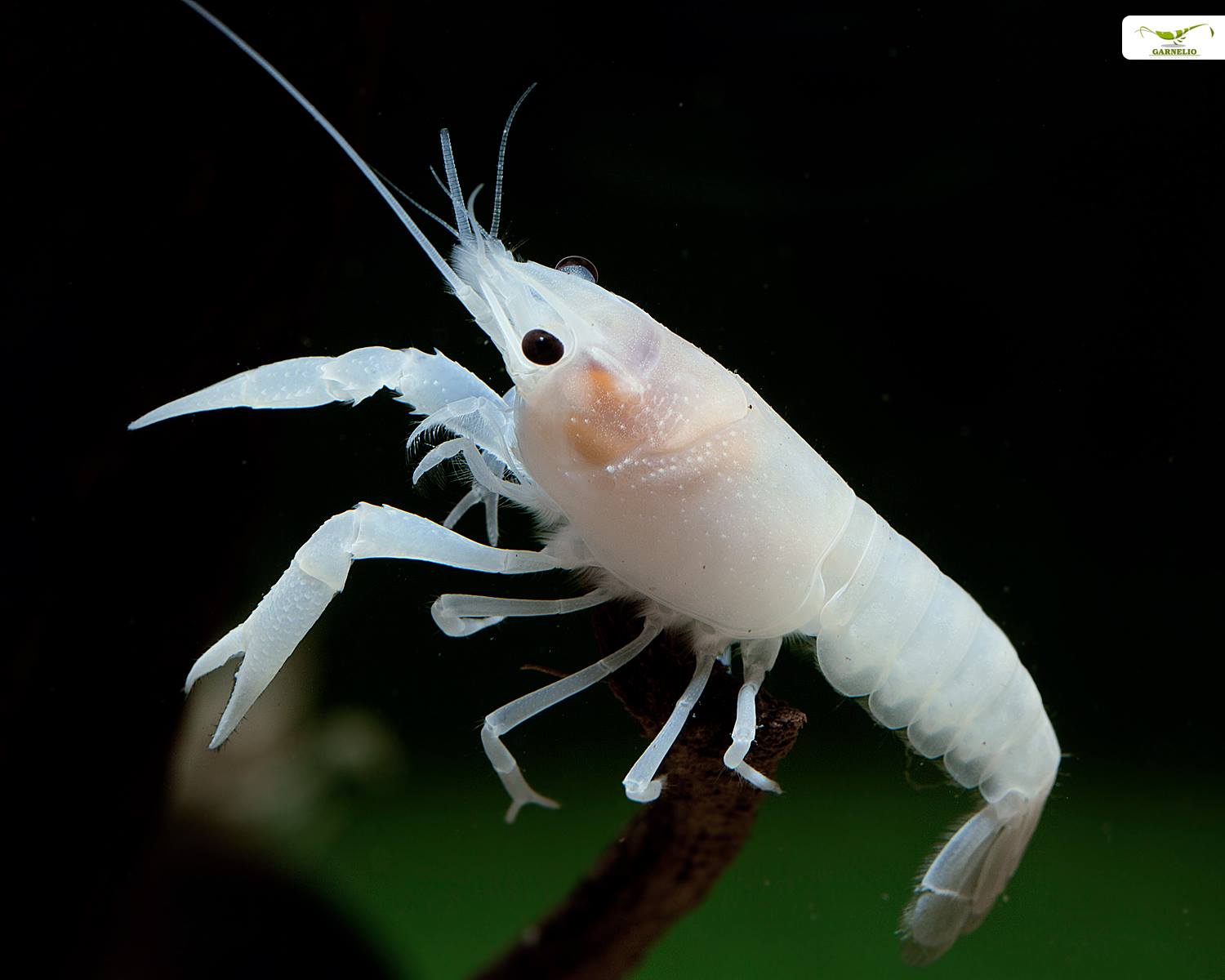
Ouch! When the pinch, pinch!
Attention, the fingers should be kept out of reach of the claws, especially with large crabs, otherwise it can be really painful! If the crab has grabbed once, it does not let go again, you can carefully pry open the scissors. Hectic movements make the crayfish grip even tighter, hang your finger in the aquarium and do not move, after a few seconds the crayfish should let go again. If you simply pull the finger out of the scissors, there is usually in addition to the bruise still a bleeding wound ...
If you have caught the crayfish safely, turn him on his back. This does not hurt it, but as a potential prey animal, a crayfish usually does not find this process particularly thrilling - it fights back. Its escape reflex is to strike with its extremely muscular tail. You should be prepared for this. Do not let go! It is advisable to perform such an examination in a place where the crayfish cannot fall deeply and - if it falls - it lands softly. If a large crab hits hard ground from a greater height, its head armor may crack, which means its death.
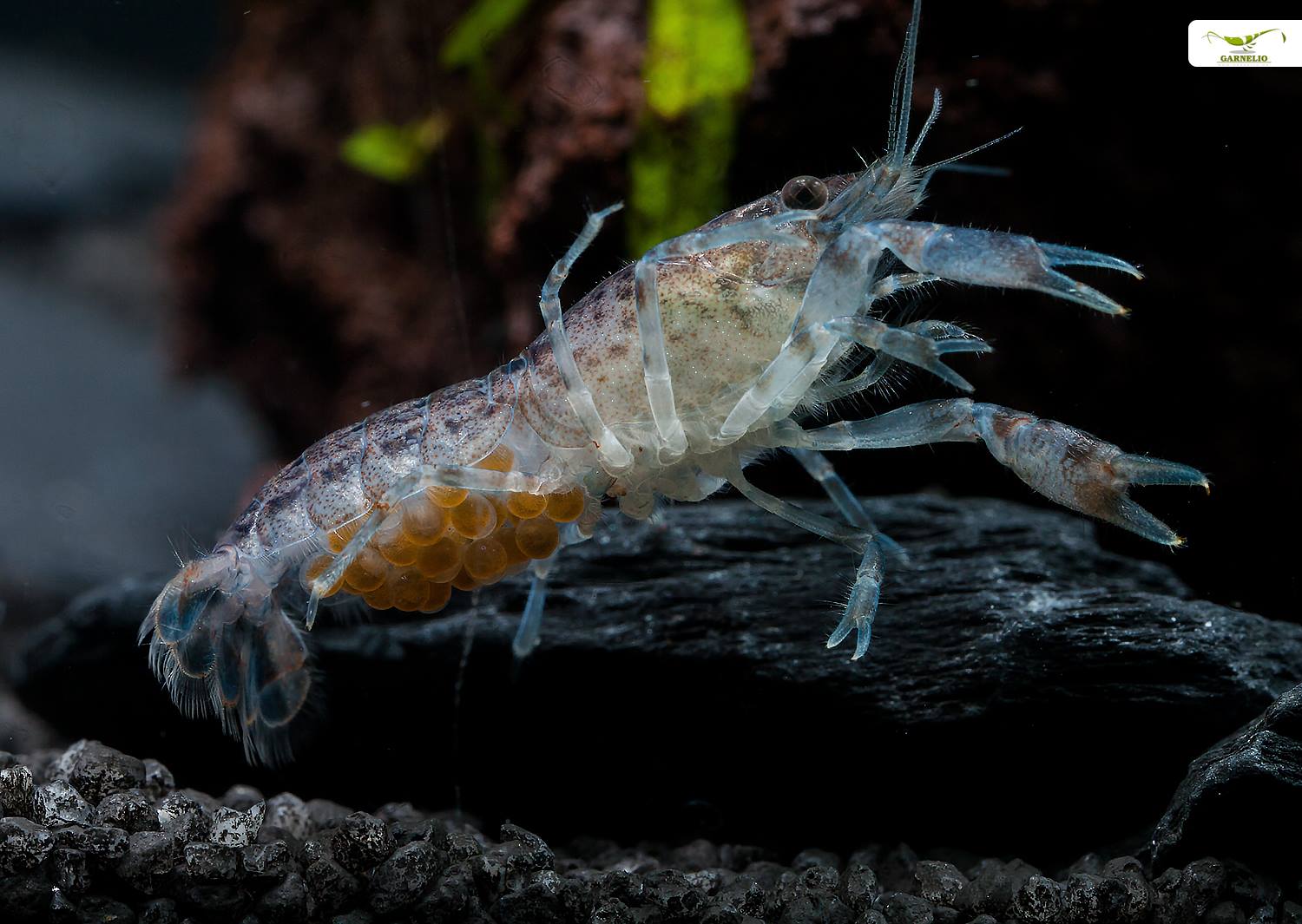
For the scaredy cats among us.... :-)
If you don't dare to touch your crayfish, hold it securely and turn it on its back, or if you don't want to stress it that much, you can just put it in a small container with transparent bottom with some water. Then you look into it from below. Ideally you take a (good) photo, so you can look later in peace and the crayfish can quickly return to its familiar environment.
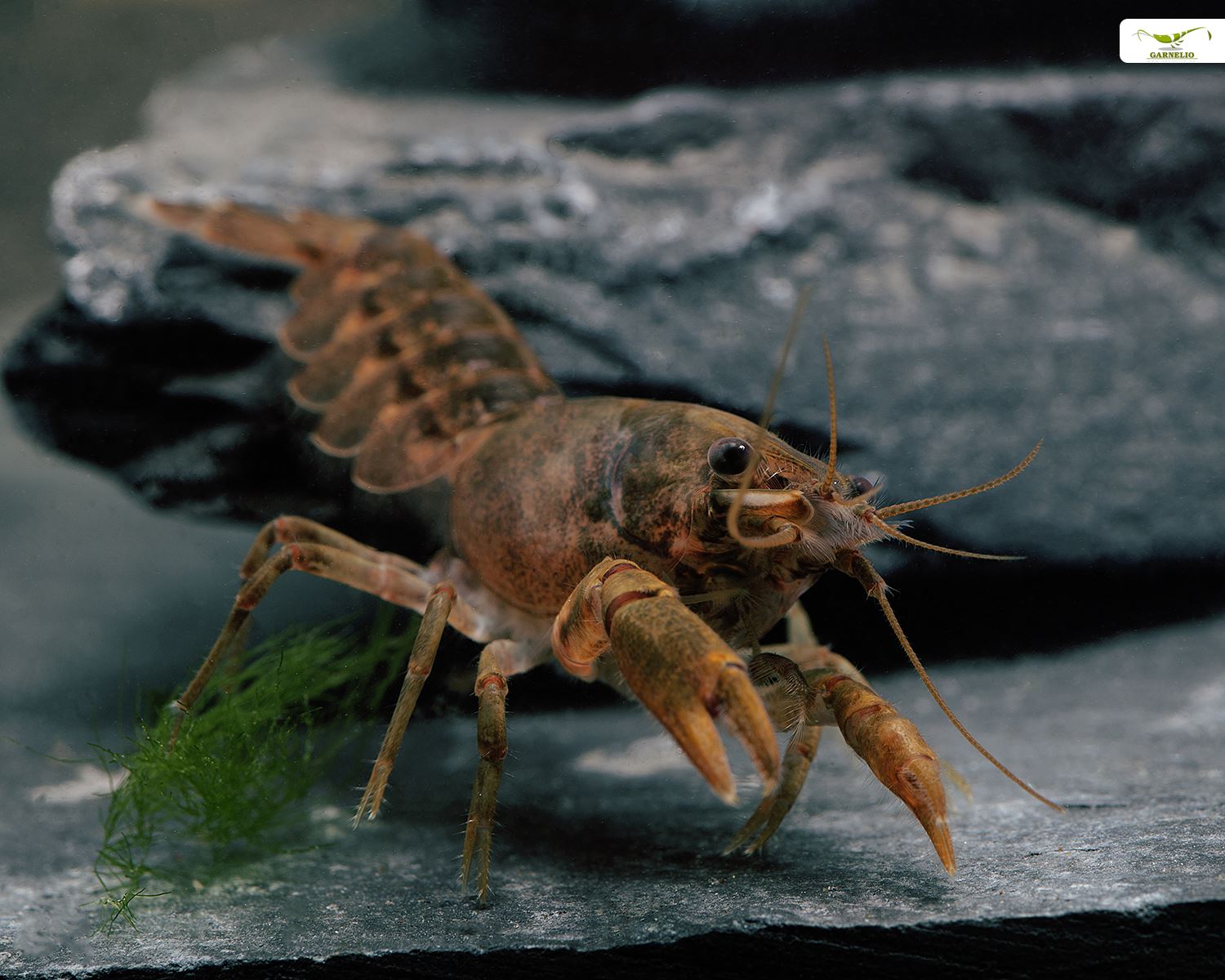
Now we come to the actual sex determination
In female crayfish - no matter which genus and species - there are paired sexual openings (the so-called gonopores) at the base of the third pair of legs. Counting is always done - even in males - from the side of the head. The pair of claws is considered the first pair of legs.
Cherax (Parastacidae) sex differences
In the family Parastacidae, to which for example the genus Cherax belongs, male crayfishes also have gonopores, but they are located at the end of the fifth and last pair of legs....
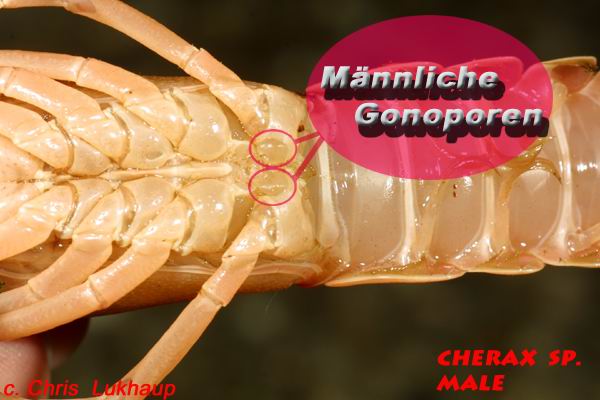

Astacus & co. (Astacoidae) Sex differences
In males of the family Astacoidae, which includes both European and American crayfish, the first two pairs of swimming legs are remodeled into V-shaped, forward-facing sexual appendages called gonopods. Male crayfish of this family therefore have only three pairs of webbed legs under the abdomen, while females have five. In theory, one can simply count the pairs of webbed legs to determine which is a male and which is a female.
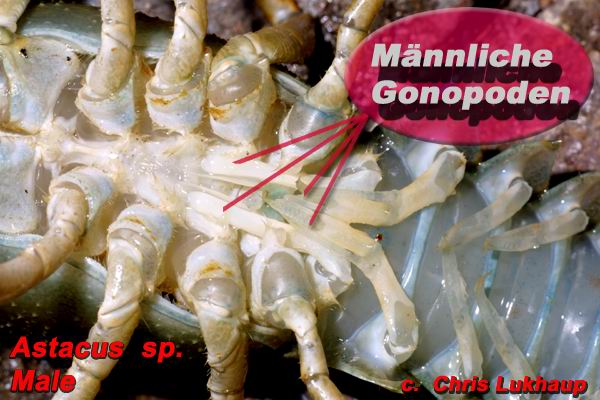

Procambarus, Cambarellus & Cambarus sex differences
In the crayfishes from North and Central America, represented in the hobby mainly by the well-known and popular genera Procambarus, Cambarus, Cambarellus, and Orconectes, the females not only have gonopores (i.e., sexual orifices). In addition to this, they have a small depression between the fourth and the fifth pair of walking legs (i.e. the penultimate and the last pair of legs, counting from the front). In this so-called annulus ventralis, the females store the spermatophores of the males until fertilization.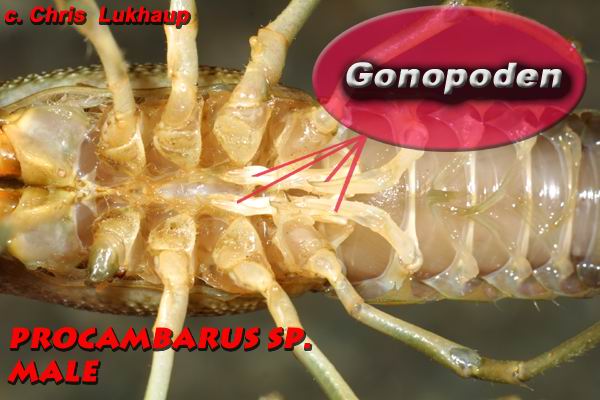
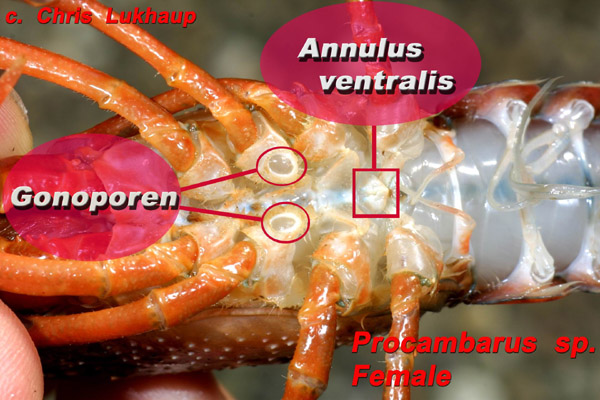

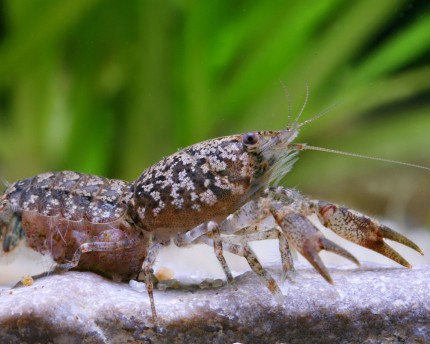
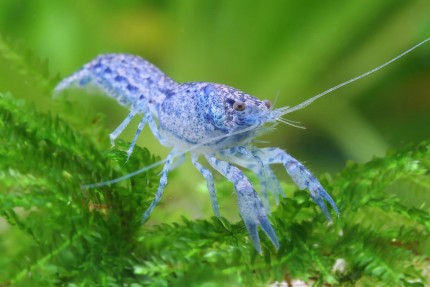
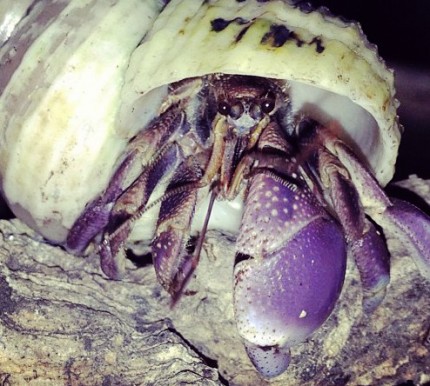
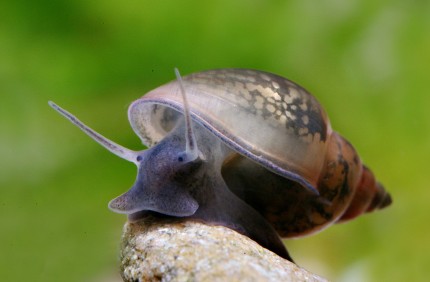
Sehr schön !
Vielen Dank für solche Infos. Die Bilder sind auch absolut hervorragend :-)
hätte eine Frage
würde gern wissen ab welcher größe man beim Procambarus die Geschlechter sicher unterscheiden kann
Ab 3 cm etwa
Ab 3 cm sieht man die Gonopoden beim Männchen schon deutlich und kann die Gonoporen evtl. auch sehen aber jedenfalls durch Gonopoden-Abwesenheit im Vergleich zu gleichaltrigen das Weibchen bestimmen.
Schöne Bilder von Chris Lukhaup.
Ich gehe mal davon aus das der Chris mit der Veröffentlichung seiner Bilder einverstanden ist ;)
Danke und eine Frage noch
Hallo
Danke für die super Erklärung. Eine Frage hätte ich aber noch. Kann man, um Nachwuchs zu verhindern, auch nur weibliche Krebse zusammen halten?